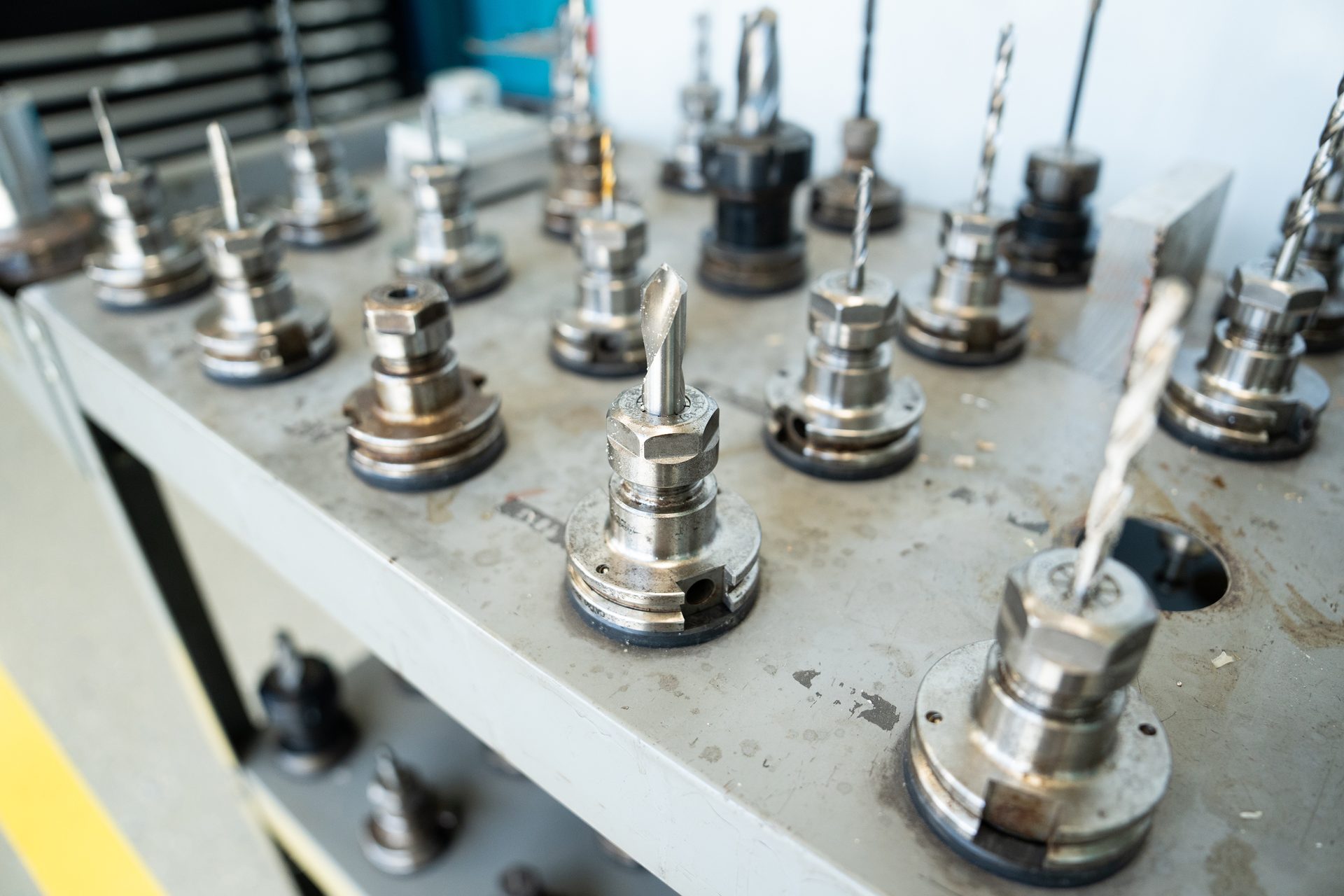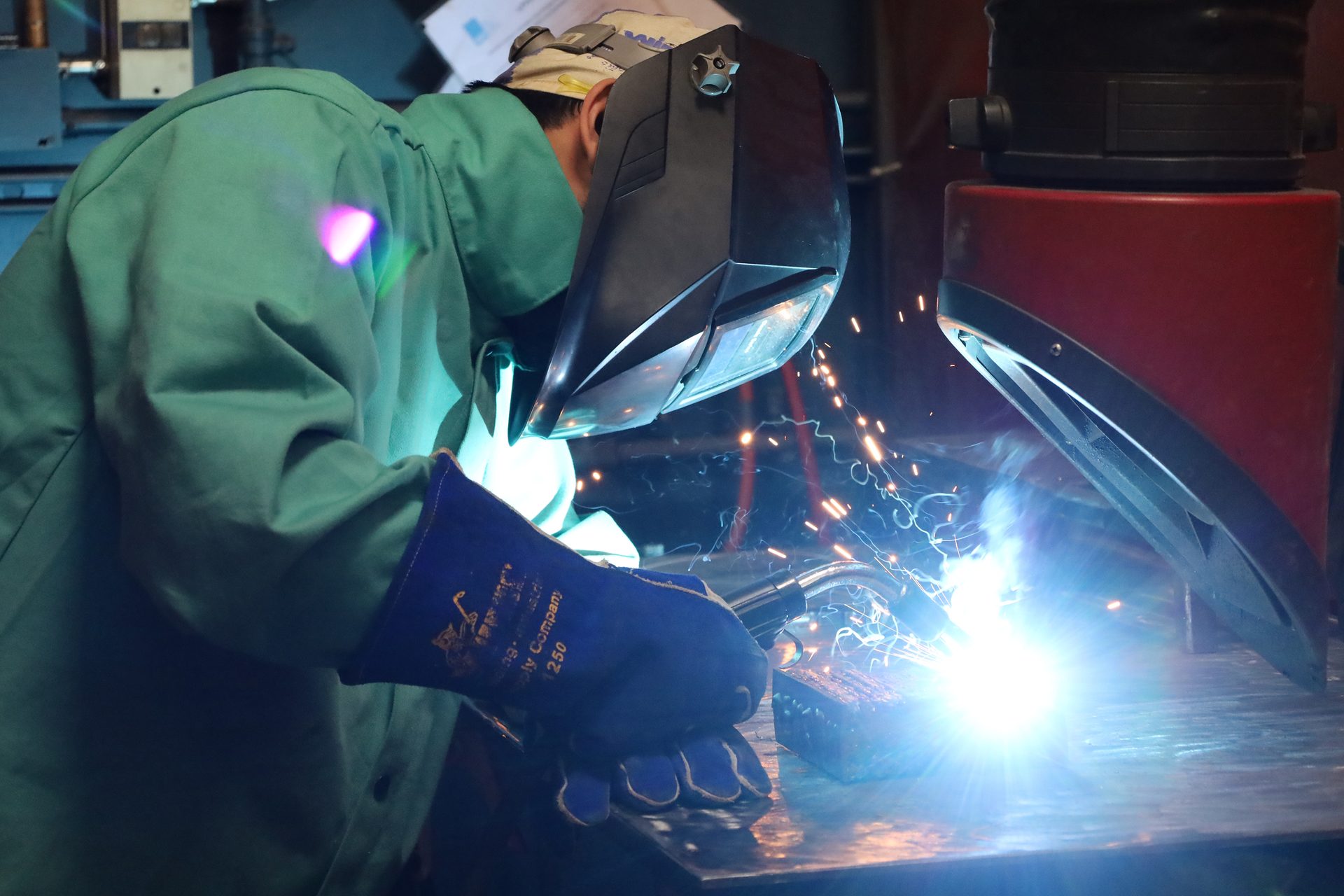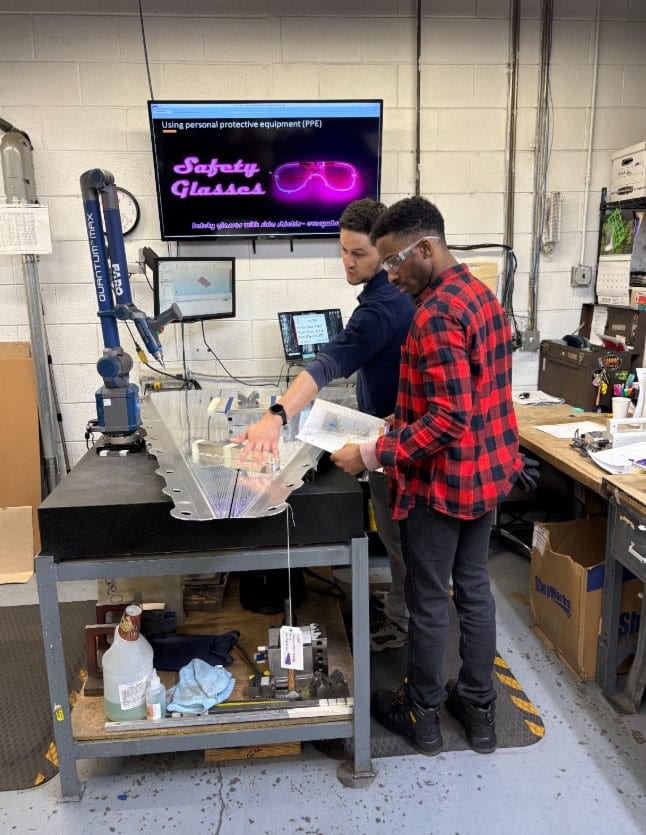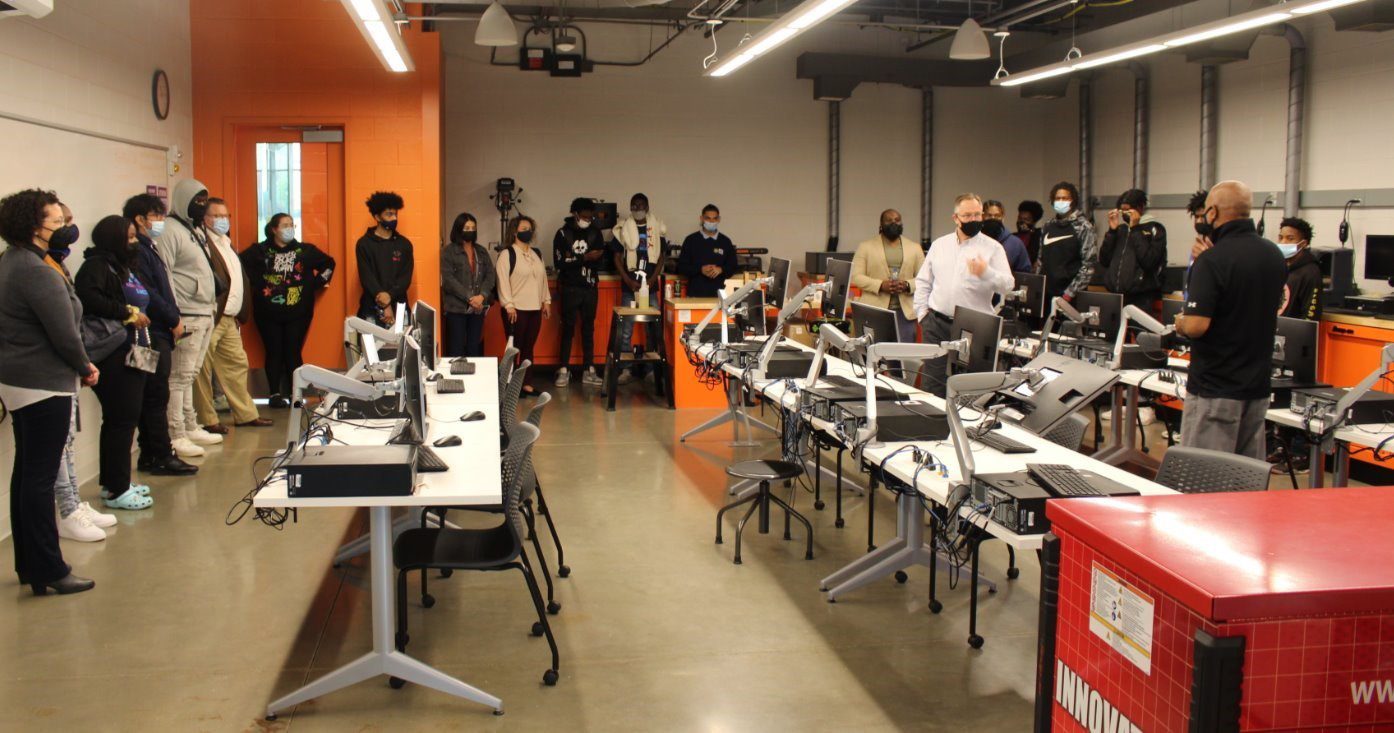H2 Deck By Bold Name
h2 xxxxxx
H1 xxxxxx
h2 xxxxx

Management
The Chicago students and educators working to bridge the skills gap. By Michelle Bangert
Meet the Manufacturing Workforce
Management
H2 Deck Info By Paragraph Style Bold
Headline
Mieka Matthews is working to bring more people into manufacturing. Matthews worked the Manufacturing Renaissance booth for the Advanced Manufacturing Day hosted at Chicago’s Daley College this spring.
At the booth, Matthews asks the high schoolers about their career plans. Some are ambitious—“Basketball”—while others aren’t sure.
She asks the students if they know what manufacturing is. “I was going to ask,” one says.
Getting into manufacturing can change someone’s life. The Jane Addams Resource Corp. (JARC) found that in 2024, the average annual household income for a student in their careers in manufacturing program was less than $12,000.
But of course, getting people into manufacturing takes work. Two Chicago-based programs are looking to introduce the next generation of manufacturing talent.
On June 19th, 2025, JARC will relocate its headquarters to the new Aspire Center in Chicago’s Austin neighborhood. The Aspire Center converts a vacant building which formerly housed an elementary school into a hub dedicated to education, health, and community development.
Source: Jane Addams Resource Corp. (JARC)

Source: Jane Addams Resource Corp. (JARC)

Manufacturing Mission
Instructor Juan Nunez, 40, has been at JARC for about a year. He’s been in manufacturing since he was 18.
“I love what I’m doing here,” Nunez says. “I love the mission. I wish I knew about JARC when I was a student.”
JARC offers programs for 18 and up. The training programs allow students to earn industry credentials, work one-on-one for job placement, receive financial coaching, and develop skills with an employment coach.
Nunez began his career as a machine operator at a packaging company. From there, he became a CNC operator and then moved into aerospace. As you’d expect, this was a high-pressure environment. The benefits at his previous employer, a mom and pop operation, weren’t ideal, so he applied for an instructor job at JARC. Today he is a senior metalworking skills instructor-quality assurance/assembly at the Austin neighborhood.
Samir Rios is one of the JARC students. He found out about the program through his sister. He was working as a bartender and wanted a change. He is in the welding section and also serves as a shift lead.
Being a shift lead helped him recognize his teaching skills. “I think it’s pretty unique that they had that here,” Rios says. He’s excited about switching careers. The program has been invaluable, as it allows him to learn as much as possible and make mistakes in a learning environment rather than on the job, he says. He’s also recommended it to others.
In addition to Chicago location, JARC also offers programs in Baltimore and Providence. The organization provides Career in Manufacturing Programs (CMP) and support services. The training tracks include options such as Computer Numerical Control (CNC), welding, mechanical assembly, and the fundamentals of manufacturing. They are also launching programs in robotics and additive manufacturing.
Source: Manufacturing Renaissance

Source: Manufacturing Renaissance

Manufacturing Renaissance
At Manufacturing Renaissance, Matthews has been with the nonprofit for almost 10 years. Today she is the program director of career pathway services. At the college event, she tells the high school students about the Manufacturing Renaissance Young Manufacturers Association, which includes a six-week paid training program for those ages 18-29.
One of the instructors is Brence Turner, Manufacturing Renaissance’s senior machining instructor, who has over 20 years of aerospace and power generation industry experience. Turner has been at Manufacturing Renaissance for six years. Previously he was working part-time as an instructor at JARC.
“When I started working in manufacturing, it was an eye-opening opportunity for me,” Turner says. “There were a lot of cool things I was able to experience, making a living for my family and myself.”
Turner originally was going to college for physical therapy. “As you know, school can get expensive. I took a break, got into manufacturing, and then the rest is history.”
Although he didn’t know anyone in CNC machining, his father-in-law ran into someone who worked in the field and recommended it. He received a Journeyman’s apprenticeship certification from the Tooling and Manufacturing Association.
Turner got his first manufacturing job at an aerospace company. Starting in aerospace definitely had a learning curve, but the advantage was that it boosted his skills. After his aerospace job he went into power generation. “That particular company had a great training program,” he says.
In order to complete his bachelor’s degree, Turner went back to school. As part of his degree, he observed a class and teacher. The class was an evening CNC class at JARC.
“One day the supervisor there asked if I was interested in a part-time position that was open,” Turner says. “I started teaching a week after that.”
Today Turner holds a bachelor’s degree from Northeastern University in Vocational Leadership, Training and Development.
He’s interested in making the connections for students and introducing them to a career path in the trades.
“We turn the light on and hope they continue to do the research and find what they’re really passionate about,” Turner says. He tells students his story and how when he started he wasn’t sure where it was going to go. “I’m a living example of what you can do,” Turner says. “If I can do it, you can do it. Also, you have my support.”
What should manufacturers do to get involved in this program or others like it? Turner suggests inviting students for tours so they can be exposed to manufacturing. If companies are able to donate old tooling or measuring instruments or money to support a cohort, it can help the organization serve the students better. For manufacturers looking to hire, Nunez advises them to look into job training places.
The skills gap is being chipped away at, one student at a time.
